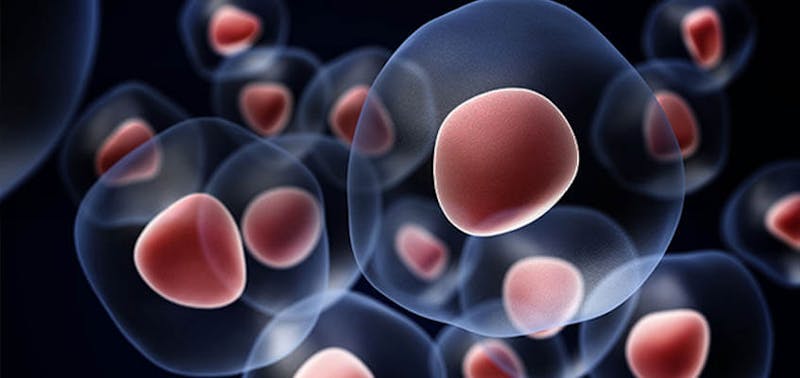
The goal in Regenerative Medicine is to “regenerate not operate”, “repair not replace” and “modify or slow down” the progression of chronic disease by harnessing your body’s ability to heal itself.
Cells are the building blocks of tissue, and tissues are the basic unit of function in the body. Generally, groups of cells make and secrete their own support structures, called extra-cellular matrix. This matrix, or scaffold, does more than just support the cells; it also acts as a relay station for various signaling molecules. Thus, cells receive messages from many sources that become available from the local environment.
Each signal can start a chain of responses that determine what happens to the cell. Through medical technology we can now understand how individual cells respond to signals, interact with their environment, and organize themselves into a healing process. Scaffolds are created utilizing various Regenerative Medicine therapies allowing the tissue to “self- assemble.”
The “main function” of stem cells in adult tissue is to repair and regenerate the tissue in which they reside. Stem cell “plasticity” refers to the ability of adult stem cells to acquire mature phenotypes that are different from their tissue of origin.
Birth Tissue
Birth tissue has been used for over 100 years for a broad range of therapeutic applications. However, it is only recently that birth tissue was discovered to have great clinical benefit when cryopreserved to protect its residual cells. Birth Tissue is donated by healthy mothers at the time of scheduled cesarean section. Through an informed consent process, expectant mothers submit their past medical and social history which is prescreened through an extensive and complete medical review and pre-natal evaluation This process is performed prior to delivery utilizing the protocols established by various regulatory agencies. Additionally, prior to delivery, the mother is tested for communicable diseases following the requirements of the Food and Drug Administration (FDA), Center for Disease Control (CDC), and the American Association of Tissue Banks (AATB). The recovery is performed by specifically trained technicians.
Additionally, birth tissue is considered immune privileged and as such does not express Class II antigens. Finally, birth tissue products are easy to use as it can be applied directly into the injured site. To date, tens of thousands of patients have been treated with these types of products.
Some people may hesitate at the idea of birth tissue. Be assured that the tissue is obtained from healthy, carefully screened mothers at the time of a scheduled cesarean section and causes no harm to her or her newborn.
Umbilical Cord Tissue (Stem Cells)
Also derived from birth tissue is Umbilical Cord Tissue (UCT). UCT provides an abundant source of stem cells. The Wharton’s Jelly, is the tissue surrounding the umbilical vein and vessels in the cord. When the vessels are removed, you have remaining tissue which contains stem cells termed mesenchymal stem cells or MSCs. MSCs are undifferentiated cells (not changed) that have the capacity to change into any specific cell type in the body. These cells, once deployed, to an area of injury/disease can readily change into the cell type that is needed to repair. Moreover, MSCs are directed to the body’s cell signals that recruit them to the site of the injury. Once they reach this area, they dock and begin repairing by releasing cytokines, growth factors and other components that are needed in the healing process. UCT is especially beneficial for patients over forty that, due to the aging process, have less viable cells than a younger patient would have.
Post Polio Patient is now out of pain after undergoing Umbilical Cord Tissue Stem Cell treatments with Dr. Joseph Greco.
Amniotic Fluid Therapy
Amniotic Fluid Therapy (AFT), an all-natural regenerative therapy, is a liquid amnion allograft composed of amniotic fluid and features many components that enhance your body’s natural healing process.
Just as the amnion (innermost layer of the placenta) protects the fetus during development, it can also provide the same protection to injured or traumatized tissue. AFT contains collagen substrates, the full range of growth factors, amnio acids, carbohydrates, cytokines, hyaluronic acid, fibroblasts, epithelial cells, and extra cellular matrix. AFT has proven to be multipotent and capable of differentiating into adipogenic, osteogenic, myogenic, endothelial, neurogenic and hepatic cell lineages.
AFT is rich with the basic components necessary for tissue regeneration providing an anti-bacterial environment. It also contains anti- inflammatory characteristics with anti-adhesion/anti-fibrotic capabilities. Additionally, the immunologically privileged nature of amnion membrane has been shown in a multitude of research papers.
A recent patient treated at Greco Medical Group diagnosed with Post-Polio Syndrome complained of knee pain for ten years. He was unresponsive to all previous traditional pain management treatments and pain medicines. The patient was injected with Umbilical Cord Tissue Stem Cells and one week later was “without pain for the first time in 10 years”.
In the final analysis, regenerative therapies utilizing birth tissue has a long history and utilizing UC Stem cells is a exciting treatment option for reducing pain, modifying (slowing down the progression of disease) in arthritic conditions, chronic diseases, including hair regeneration and cosmetic procedures.
The best way to evaluate a patient is to arrange a personal, in-depth consultation. However, this is impossible for many patients who fly in from other parts of the country or world. For this reason we have developed the remote consultation package, which is an acceptable alternative to the in-person personal consult.
Once your photos and questionnaire are reviewed, we will telephone you to discuss your questions or concerns regarding the procedure. You will also be given a suggested treatment plan and the costs involved. Click here for more complete information on our free on-line hair restoration consultation process.
